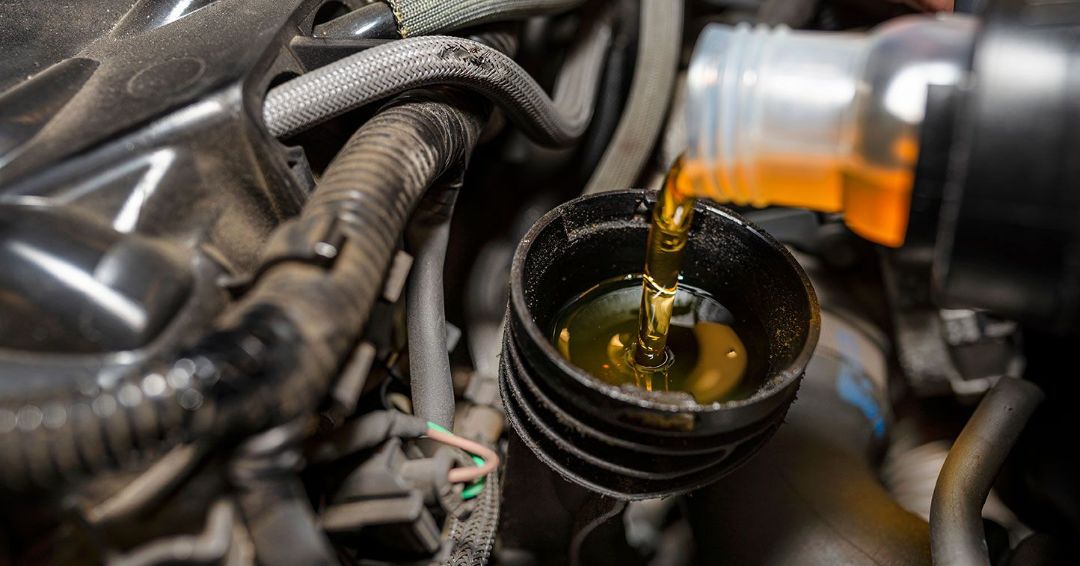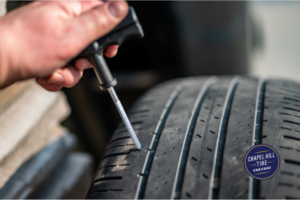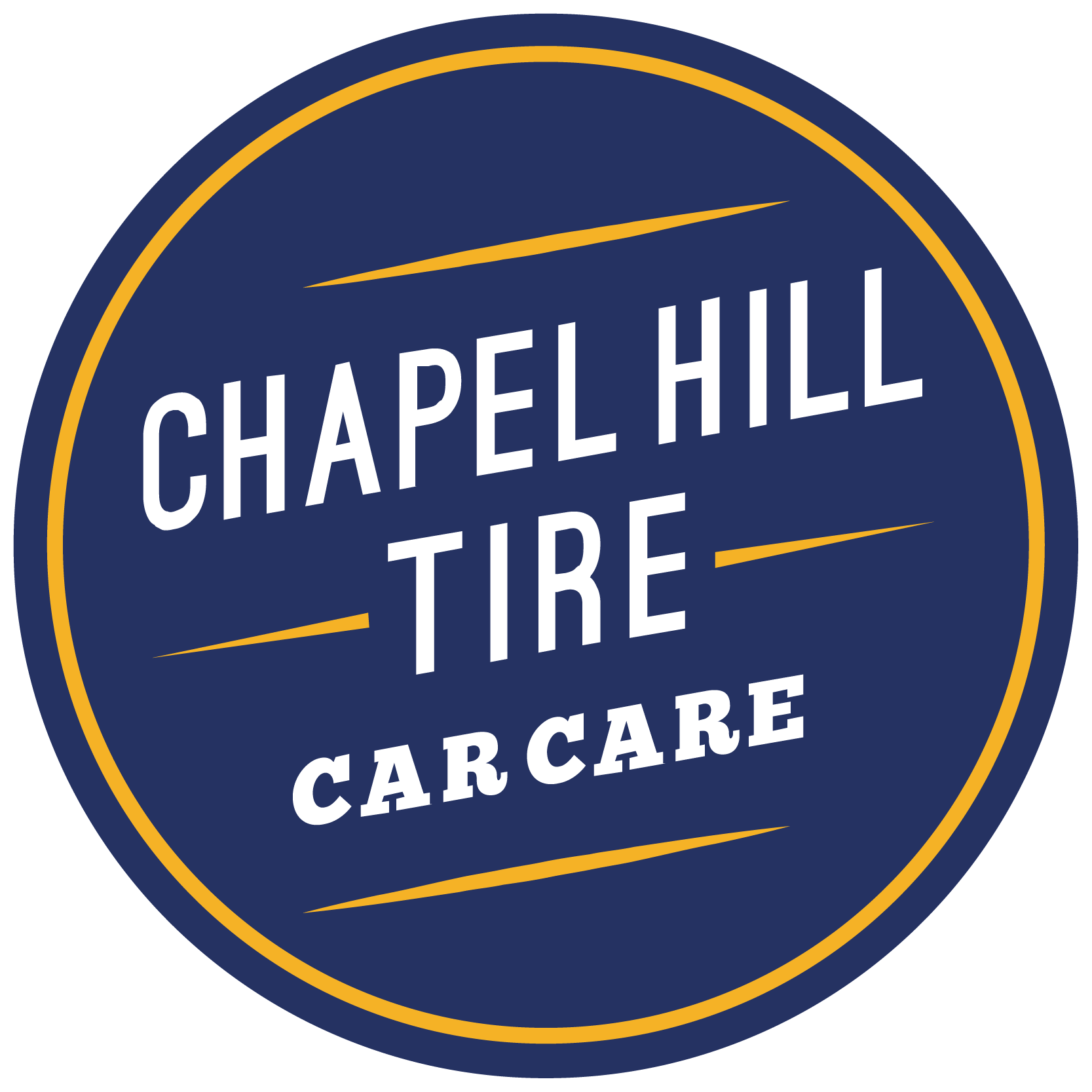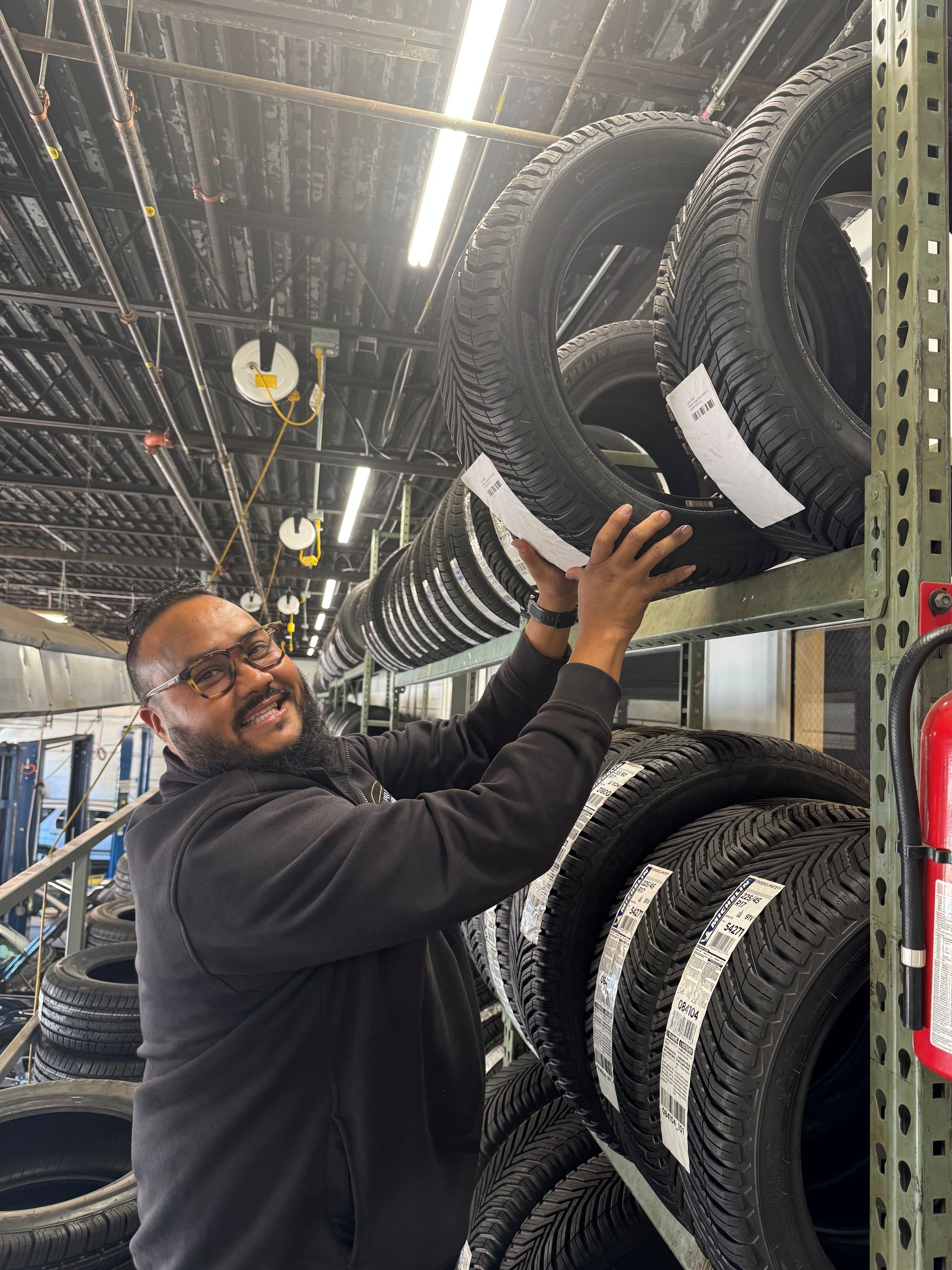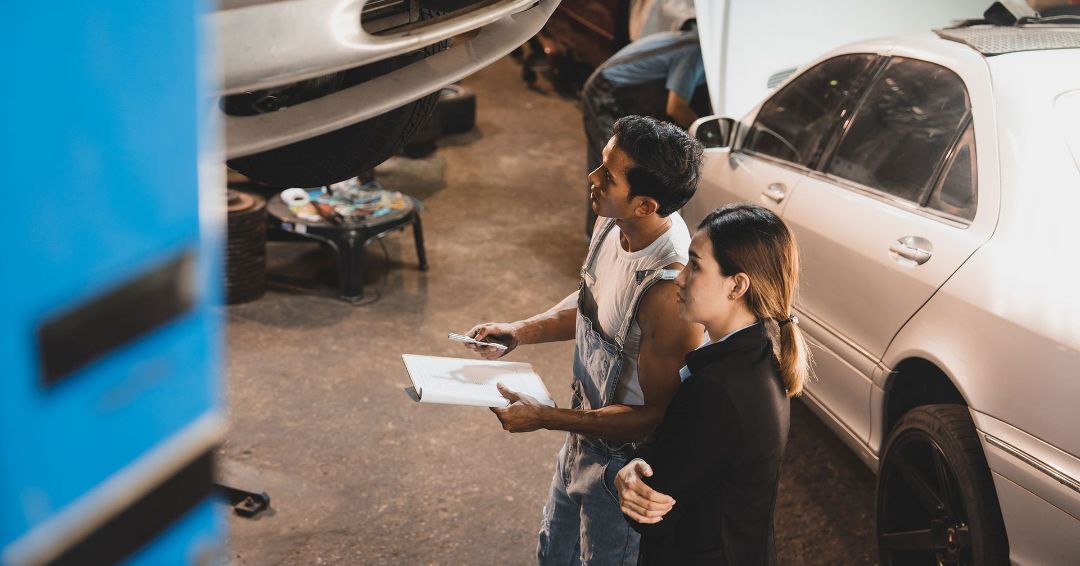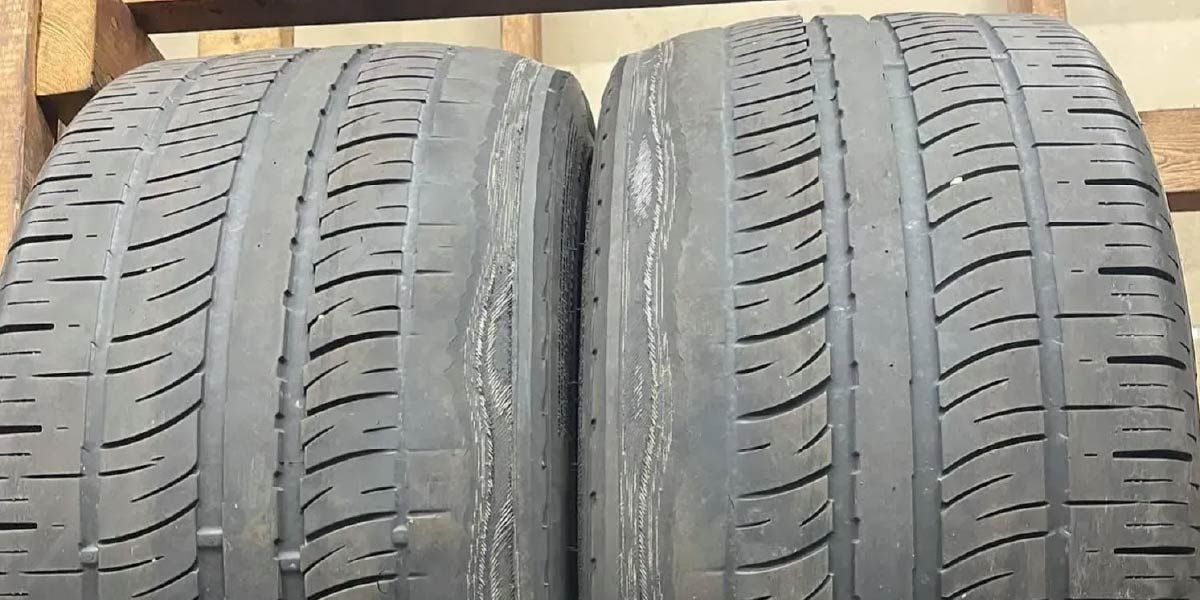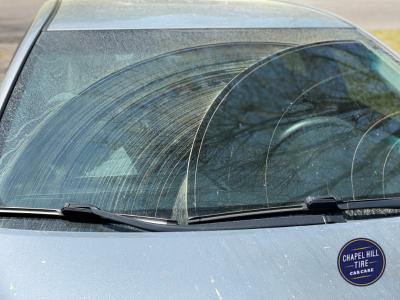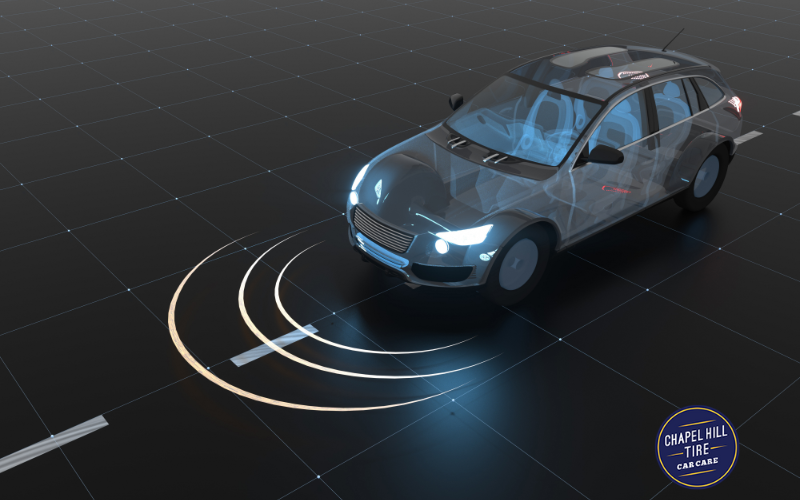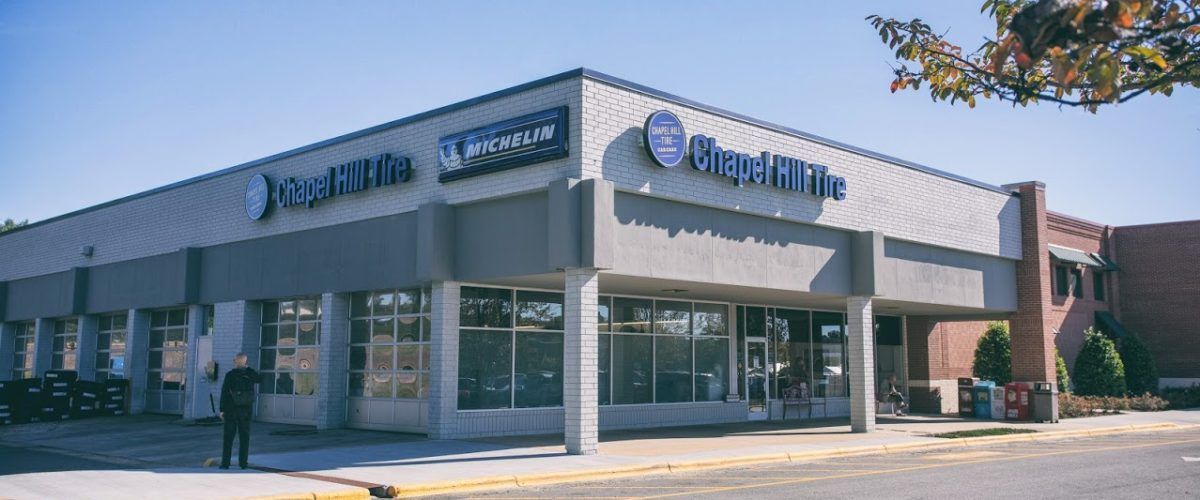Can You Drive With a Flat Tire?
Auto Shops Located in: Chapel Hill, Durham, Taleigh, Apex, and Cary North Carolina
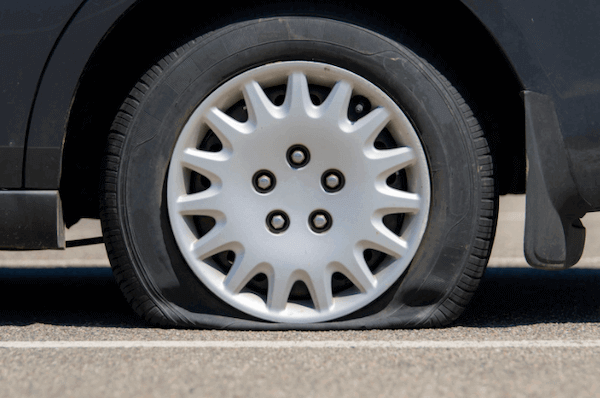
There is perhaps no worse feeling than driving down the road and learning you have a flat tire. Bumps, potholes, rim damage, and standard tire wear can all lead to flats. One common question we get from customers—“Can I drive on a flat tire?” The professional mechanics at Chapel Hill Tire are here with insight.
Low Tire Pressure vs. Flat Tire: What is the Difference?
When you see your low tire pressure dashboard light come on, this could indicate a flat tire; however, it is more commonly a minor tire issue. So what is the difference between low tire pressure and a flat tire?
- Flat tires: Flats are often fully deflated and require repair. This can happen if you have a large puncture, tire damage, or a bent rim.
- Low tire pressure: When your tire inflation falls slightly beneath your recommended PSI, you have low tire pressure. Low pressure could be caused by small punctures (such as a nail in your tire), standard air loss, wintery weather, and more.
While neither of these car issues is ideal, flat tires are more severe iterations of low tire pressure.
Can You Drive with Low Tire Pressure?
You may be asking, “Can I drive my car with low tire pressure?” Driving with low tire pressure is not ideal, but it is possible. Tires with low pressure will still move along, but they can come with a variety of negative side effects, including:
- Poor vehicle handling
- Rim damage
- Sidewall damage
- Poor fuel economy
- Increased chance of flat tires
- Excellerated tire tread wear
All that is to say, if you are driving with low tire pressure, you should be on your way to a mechanic for free tire inflation. Consider checking your tire pressure each month to ensure that it is not getting too low. Here is our quick guide on finding information about your tires—including recommended pressure.
Can You Drive with a Flat Tire?
The short answer is no—you cannot drive with a flat tire. While you might be tempted to “limp” your tire to the repair shop, you cannot drive with a flat tire. Driving on a flat can lead to all of the same issues listed above for low tire pressure—including vehicle safety and handling troubles—but their likeliness and consequences are magnified.
Your tire repair will depend on the source of your flat. If there is a screw in your tire, you will need a patching service and tire inflation. Bent rims will require rim straightening service to address flat tire problems. If your flat tire caused serious damage or is the result of an old tire, you will need a tire replacement.
Chapel Hill Tire Flat Tire Repair and Replacement
Chapel Hill Tire is here to serve all of your low tire pressure, flat tire, tire repair, and tire replacement needs. You can visit one of our 9 Triangle-area locations across Raleigh, Apex, Durham, Chapel Hill, and Carrboro for support. Our shops are also right down the road for drivers in Wake Forest, Pittsboro, Cary, Holly Springs, Hillsborough, Morrisville, Knightdale, and beyond. You can make your appointment here online, or give us a call to get started today!
We’ve got all your automotive repair needs covered.

